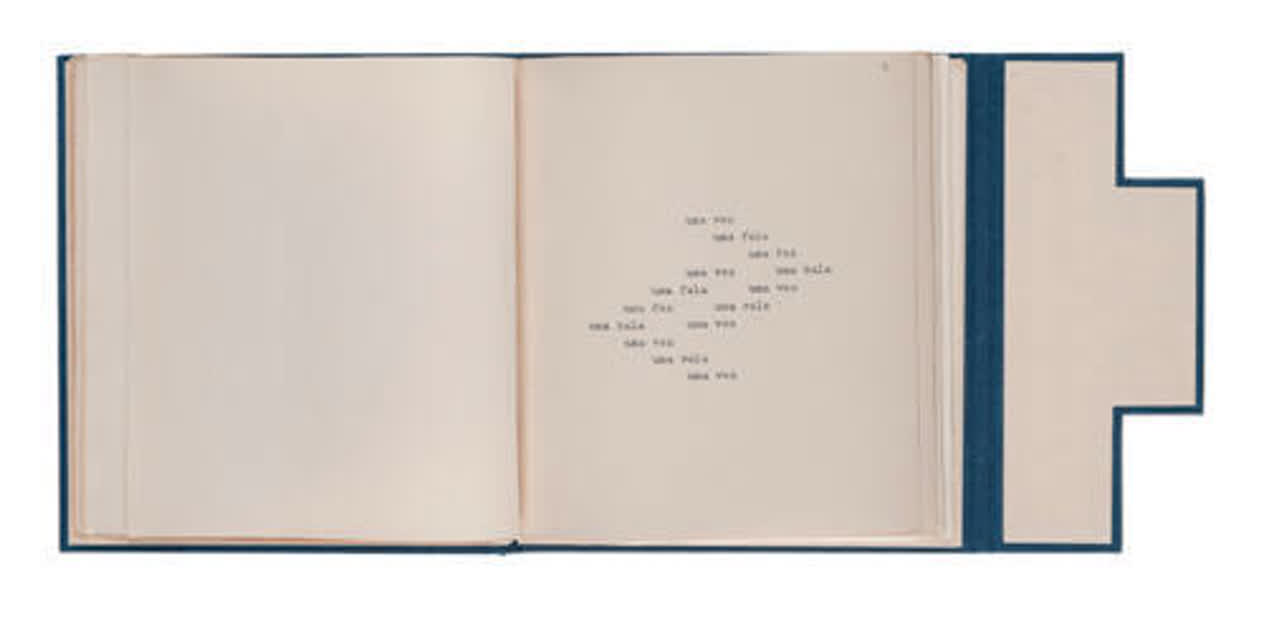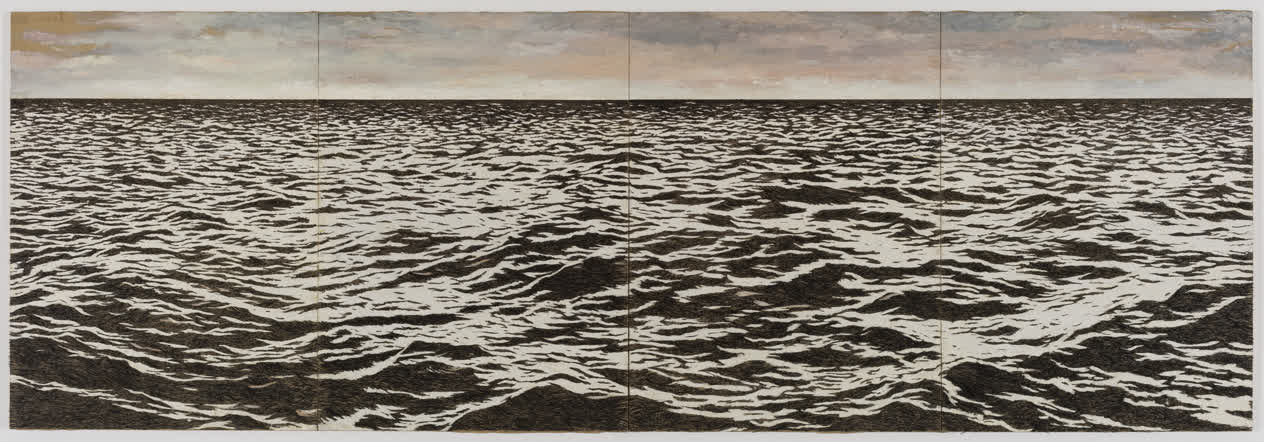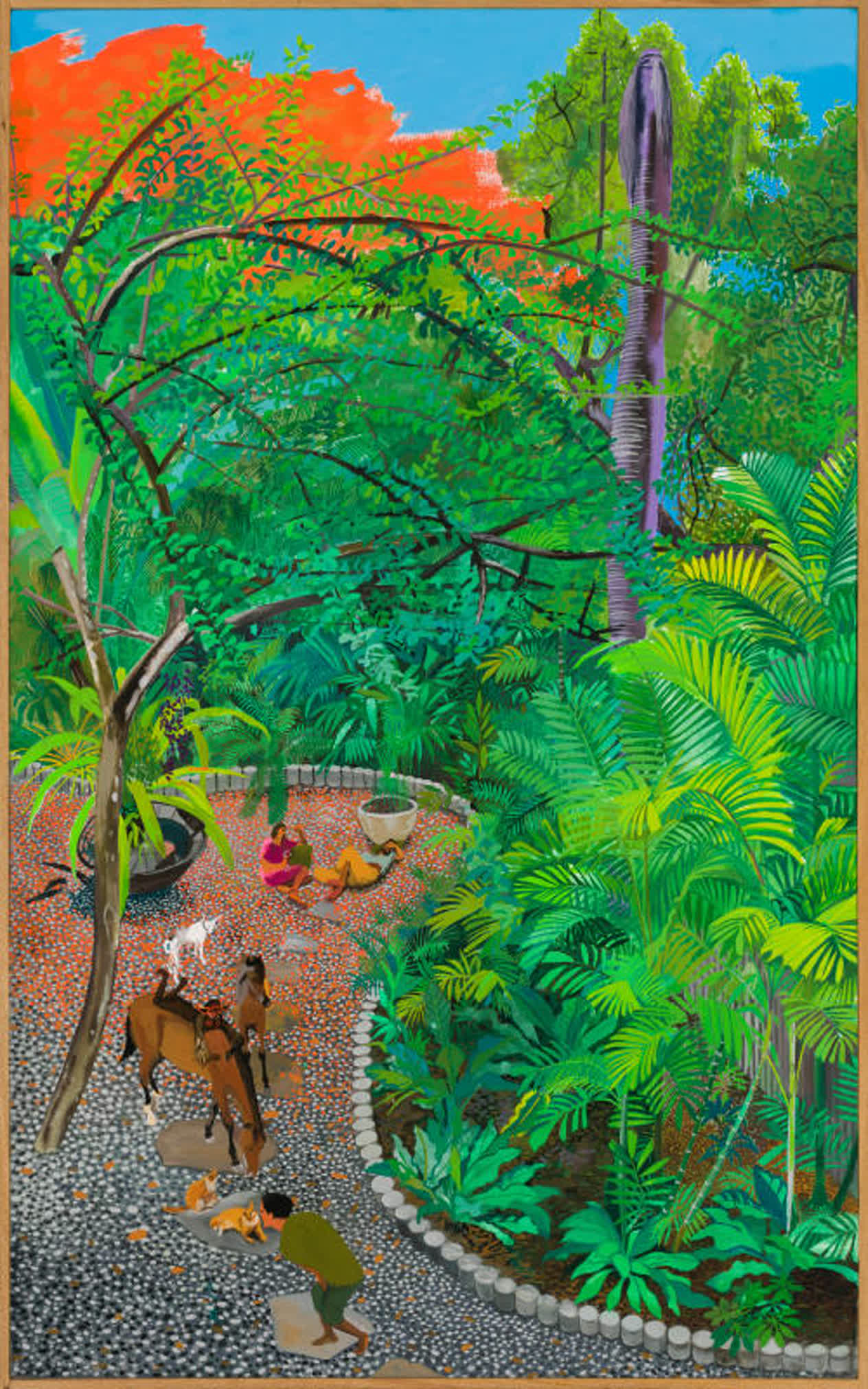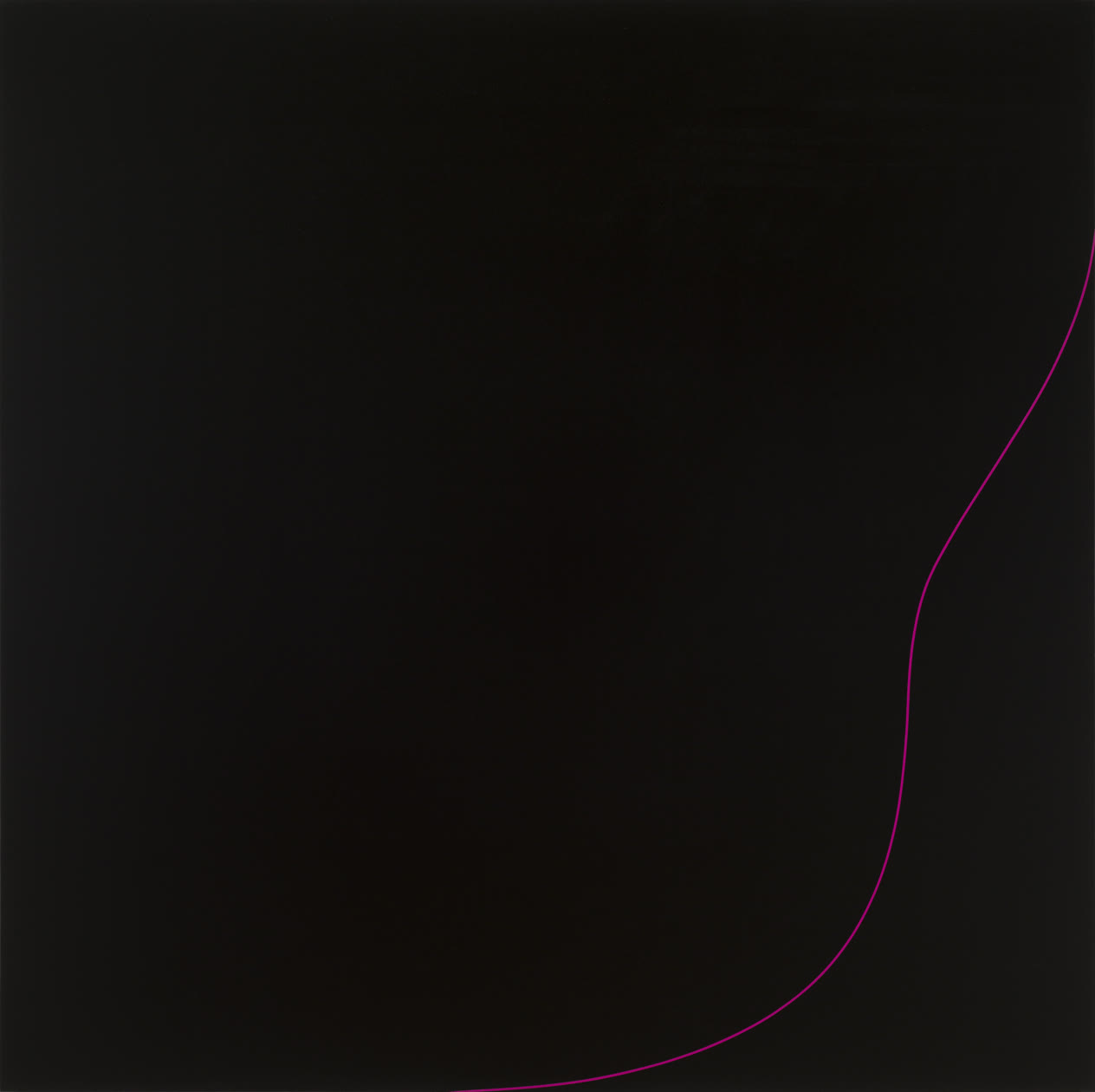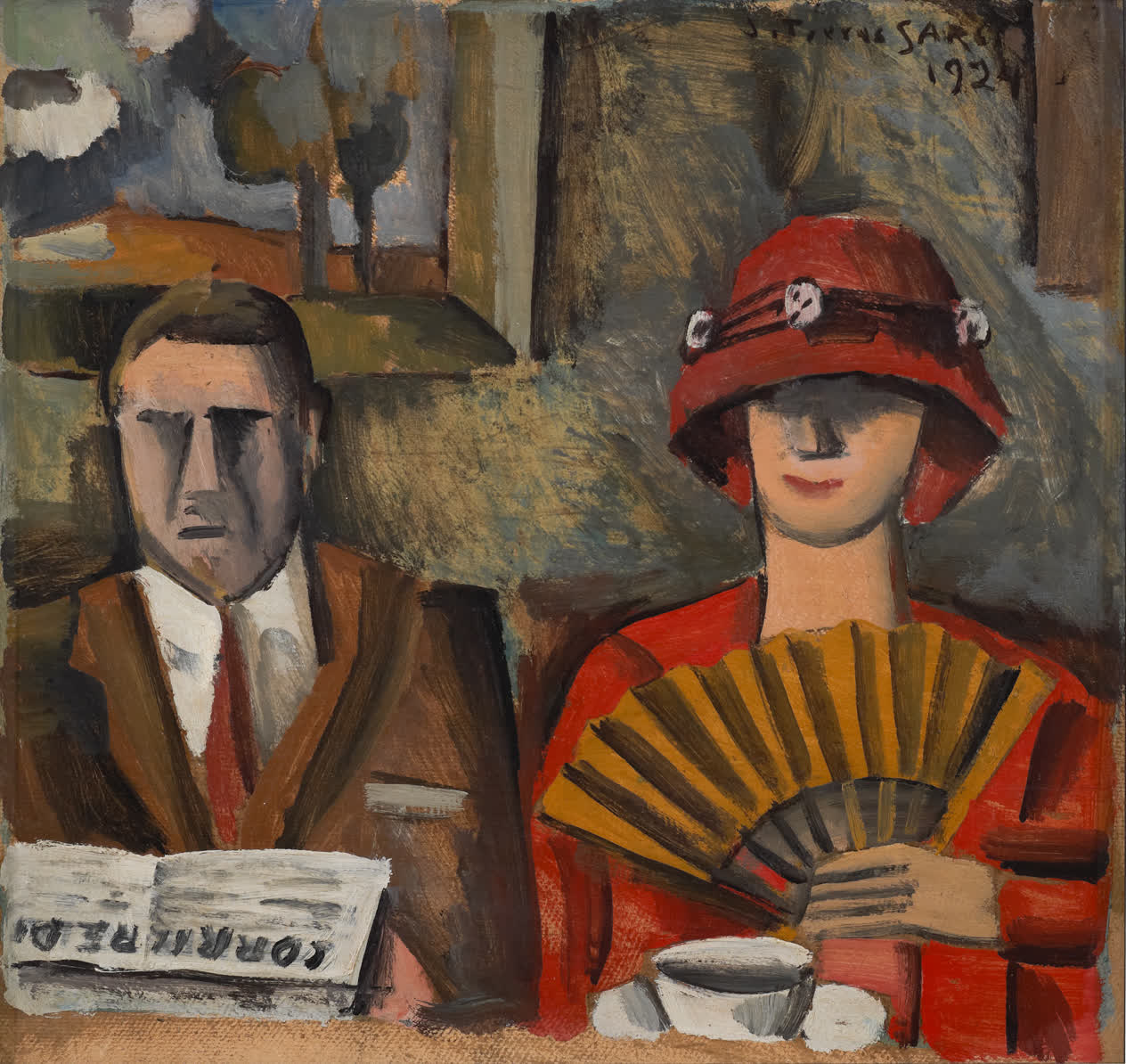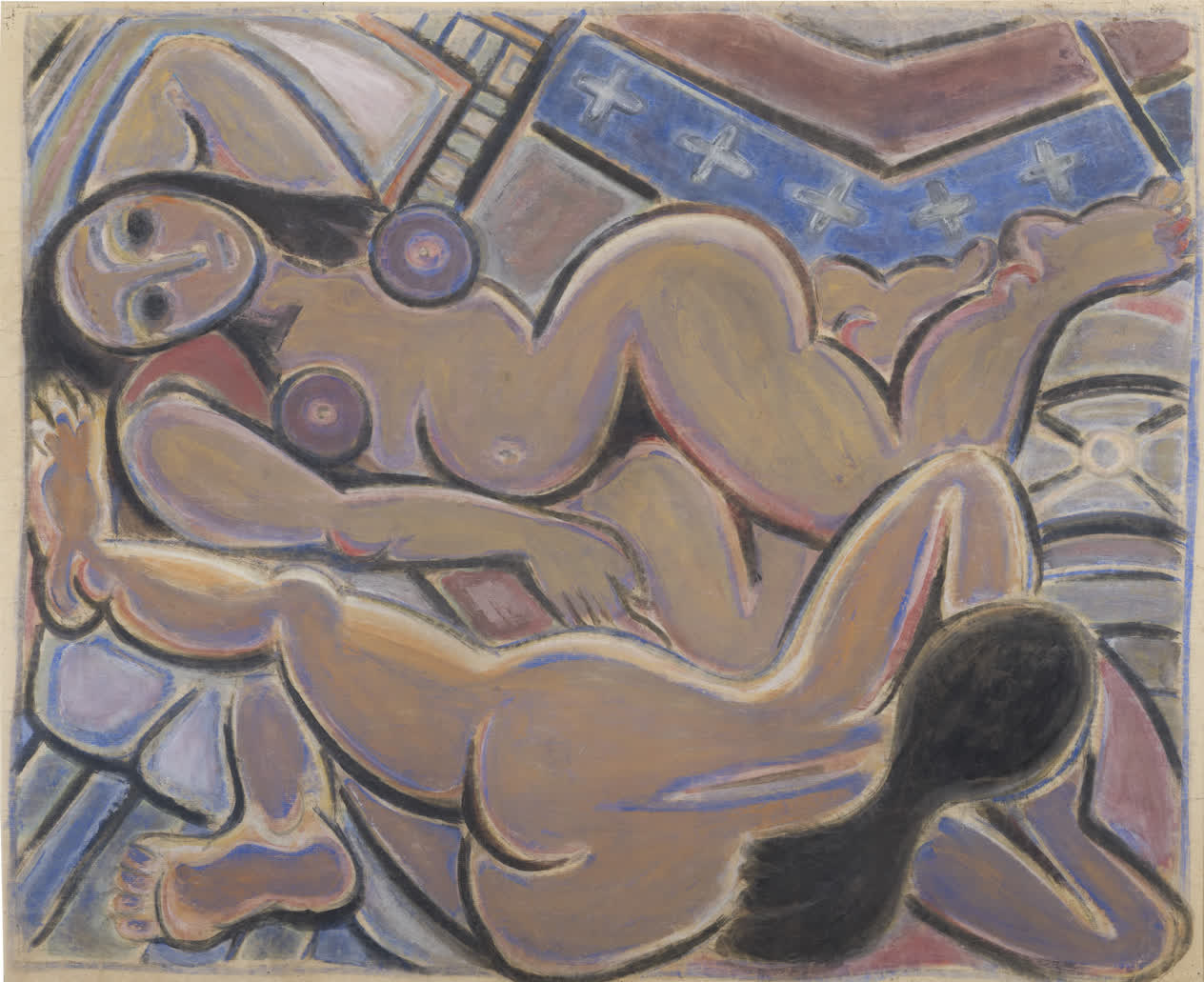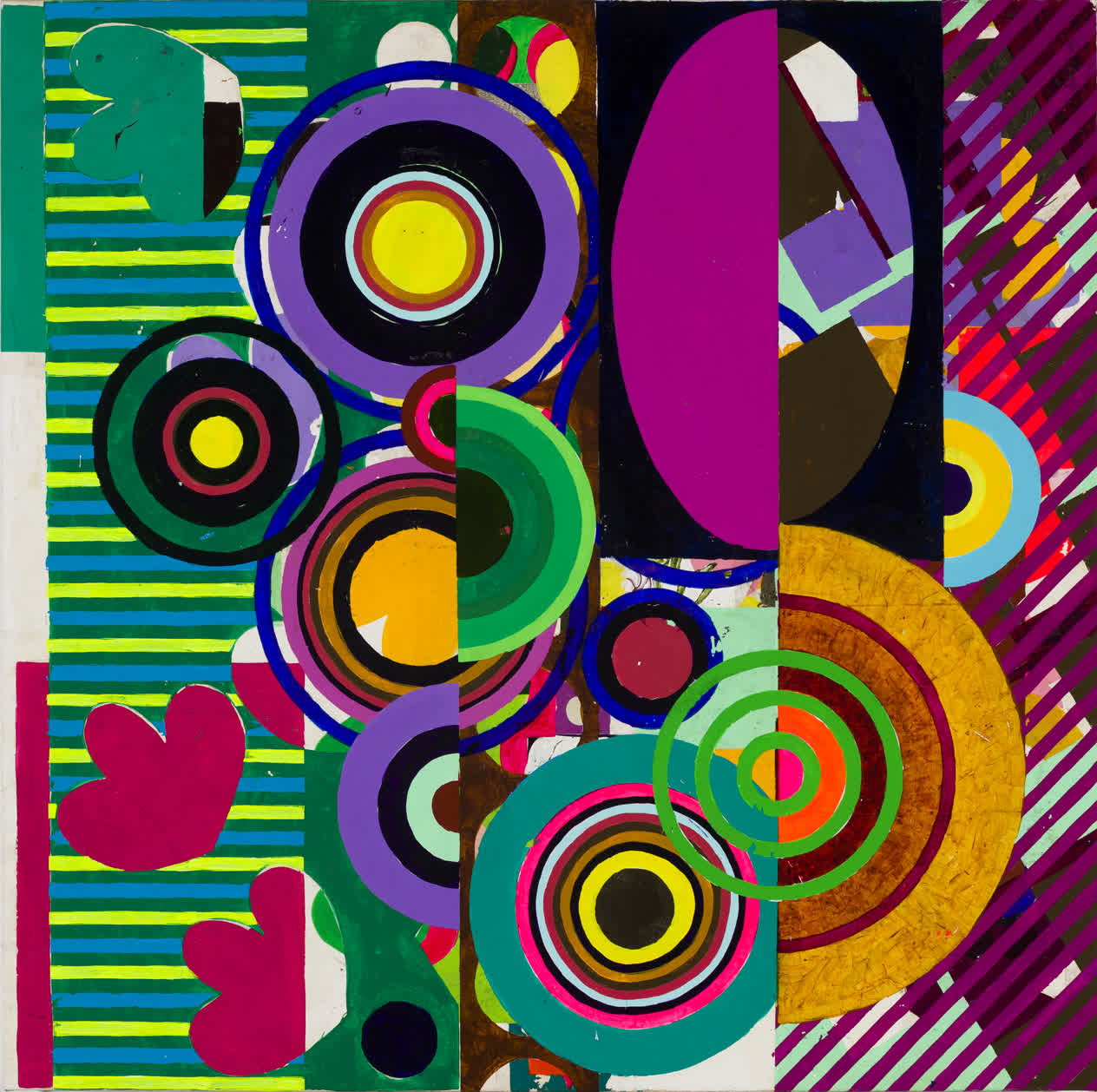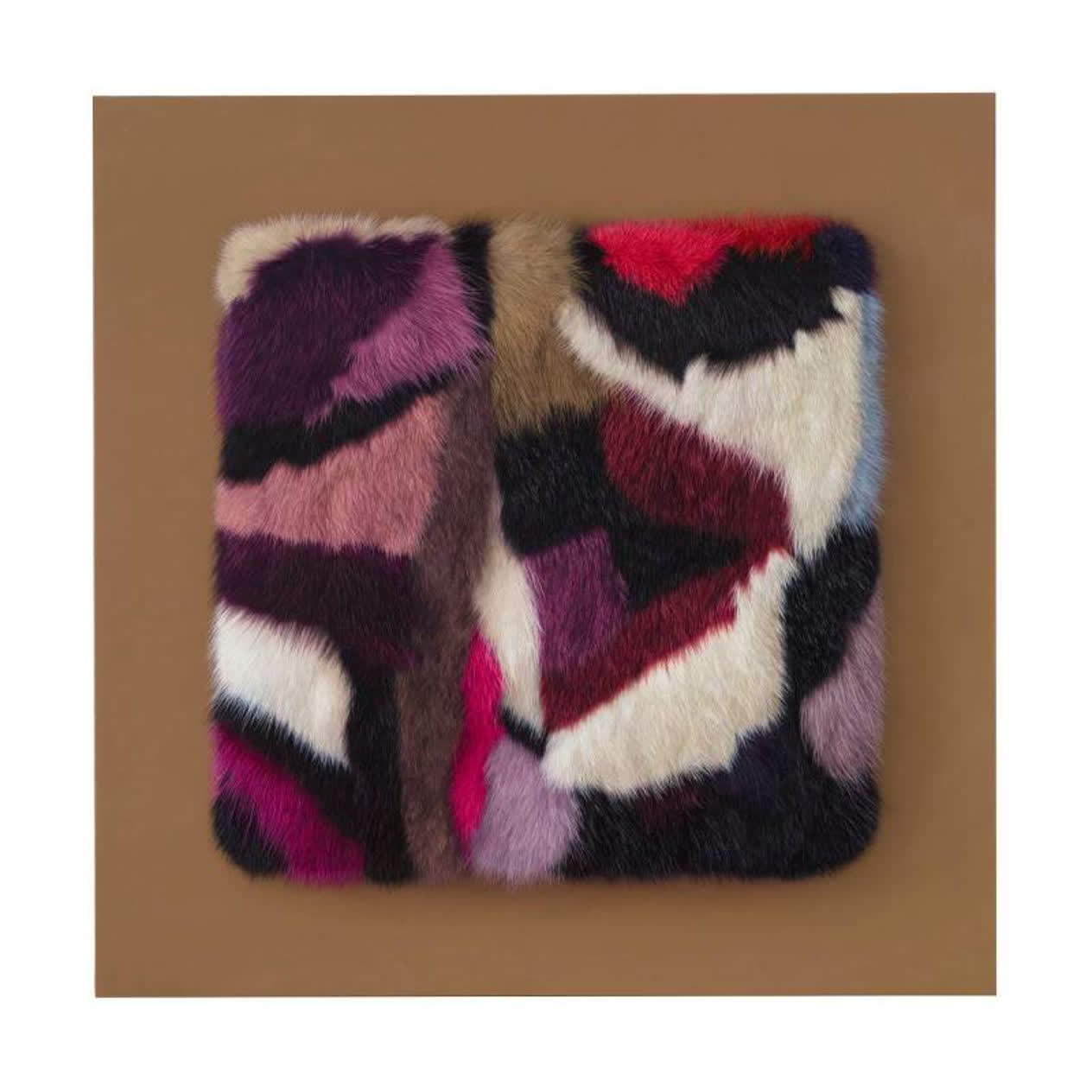Juan Pablo Garza Ricardo con parangolé (Ricardiño antes del alba) (Ricardo with parangolé (Ricardiño before dawn) ) 2018
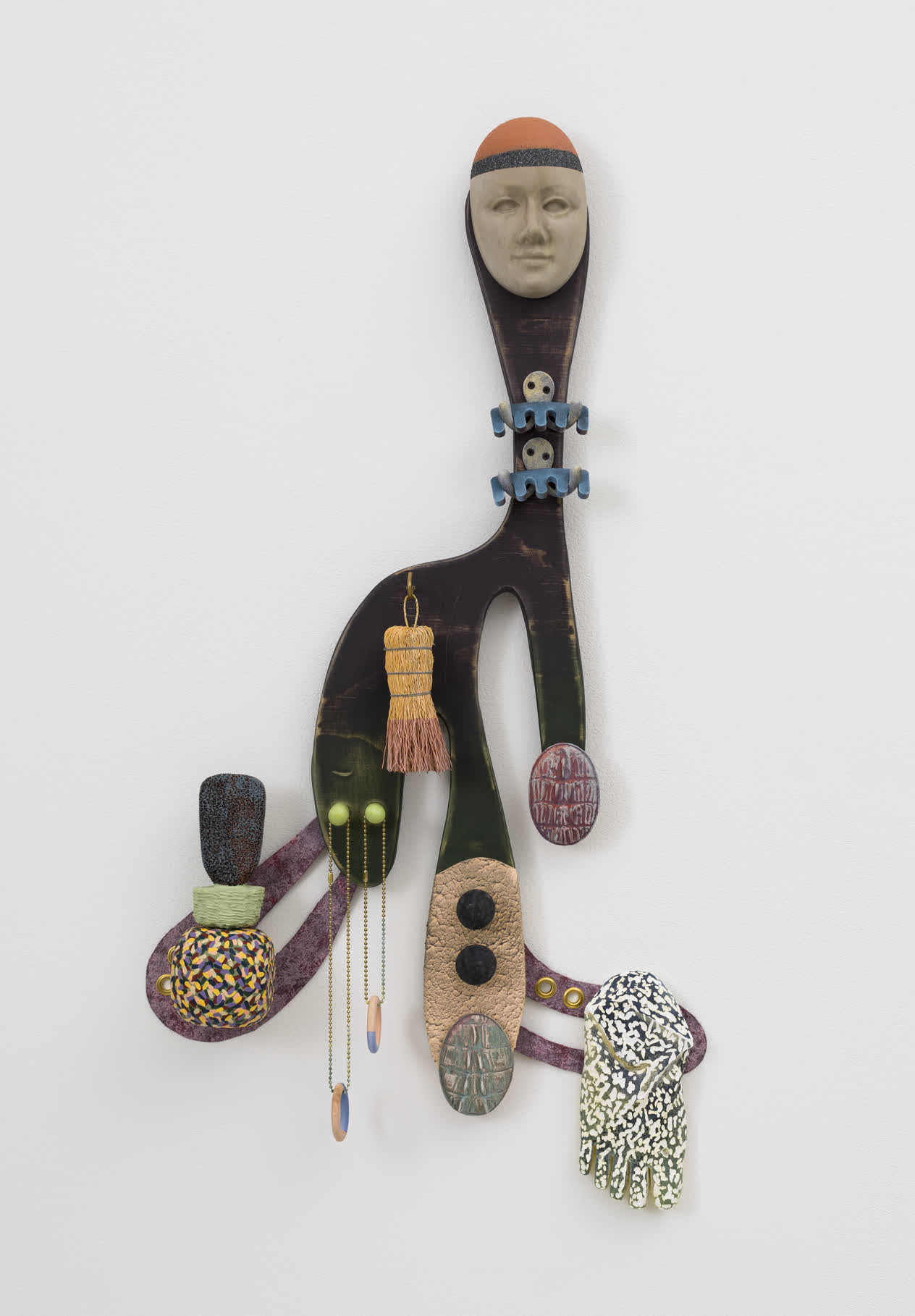
© Juan Pablo Garza

Juan Pablo Garza transforms everyday found objects into beautiful arrangements, using color, assemblage and pictorial techniques. Garza’s process is characterized by a constant recollection and reorganization of materials, such as Peruvian flutes, bones, feathers, fabric, and stones, among others. Ricardo con parangolé (Ricardiño antes del alba) is a sculptural-wall work made of different found materials, such as fabric and stones, configured in anthropomorphic formation. The title of the work alludes to two important figures in Latin American culture. Parangolés are wearable sculptures created by renowned Brazilian artist, Hélio Oiticica, while the second part of the title could be a reference to critically acclaimed Cuban writer Reinaldo Arenas’ first novel Celestino antes del alba (translated as Singing from the Well). On the upper part of the object, the work has a ceramic head followed by a trunk and four limbs, all facing downward, giving the work a surrealist and totemic character.
Identification
Title
Ricardo con parangolé (Ricardiño antes del alba) (Ricardo with parangolé (Ricardiño before dawn) )
Production Date
2018
Object Number
2018.074
Credit Line
Collection Pérez Art Museum Miami, museum purchase with funds provided by Diane and Werner Grob
Copyright
© Juan Pablo Garza
https://www.pamm.org/en/artwork/2018.074
Copy artwork link
Physical Qualities
Medium
Mixed media
Dimensions
40 x 21 x 3 3/4 inches
Visual Description
Ricardo con parangolé (Ricardiño antes de alba) by artist Juan Pablo Garza is a mixed media work made in 2018. It measures forty inches tall by twenty-one inches wide and is hung in portrait orientation, meaning its shortest side runs parallel to the floor. This piece is an example of an assemblage relief sculpture, meaning that it is made of various materials that, though hung flat on a wall, protrudes three inches in a slightly three-dimensional manner.
Ricardo con parangolé (Ricardiño antes de alba) is comprised of different found materials such as fabric and stones, configured in anthropomorphic, or human-like formation. The work is mounted on a wishbone-shaped wooden board that features four total lobes or appendages, branching off from one another like limbs. One piece of the panel shoots vertically upward, while three dangle downward. The wooden board is stained to a coffee-colored appearance. From the center of the wishbone shape, a narrow panel rises vertically, like a long neck. At the top of the composition is a mask-like gray clay face. The top of the face appears to have a skull cap colored in terracotta orange, with a turquoise blue ridge dividing the cap from the gray coloring of the face. As one moves down the neck-like extension toward the bottom right limb, one finds two blue toe dividers that are usually used during pedicures. They rest on two silver pronged hooks.
Continuing down, the right-most appendage has a blue oval shape at its end, divided in four sections by horizontal lines. Each of these sections have vertical lines scratched into it. In these scratches rests blood-colored paint. Moving toward the middle appendage, one looks down to see the bottom half of it covered in a sponge-textured cream painted surface. At the bottom of the appendage rests another oval seed-like shape, tinted turquoise, and divided into five sections by four horizontal lines. The vertical ridges are turquoise but its crevices have red specks. Above this seed are two black three-dimensional black charcoal-like forms. Extending to right of the end of the middle appendage is a dull purple loop with two gold metallic grommets embedded into it. To the right of the gold grommets is a green and white toe sock, hanging of the end of the dull purple loop.
On the top curve on the center left of the wishbone, hangs a yellow straw tassel with pink tips. Two grey wires wrap around the tassel as it hangs from a gold hoop. As one follows the curve from the middle of the wishbone to the leftmost limb one notices two fluorescent rods extending about three inches from the surface. On each of the rods hang two metal link chains. One on the left is about four inches longer than the one on the left. On each hang identical rings, with powder blue paint on the bottom halves, and peach on the top. To the left of the appendage, a loop extends outward, similarly to the loop on the right of the piece. It is purple with blueish and pink specks. Attached to the loop is a round object with maroon, green, light green, yellow, and peach oval shaped brushstrokes. On top of this round object is a lime green cylindrical oval with a flat surface. On top of the cylinder is a stone-like form, around five inches tall with rounded edges. It is mostly black, with some flecks of dull orange and green like moss or rust.






